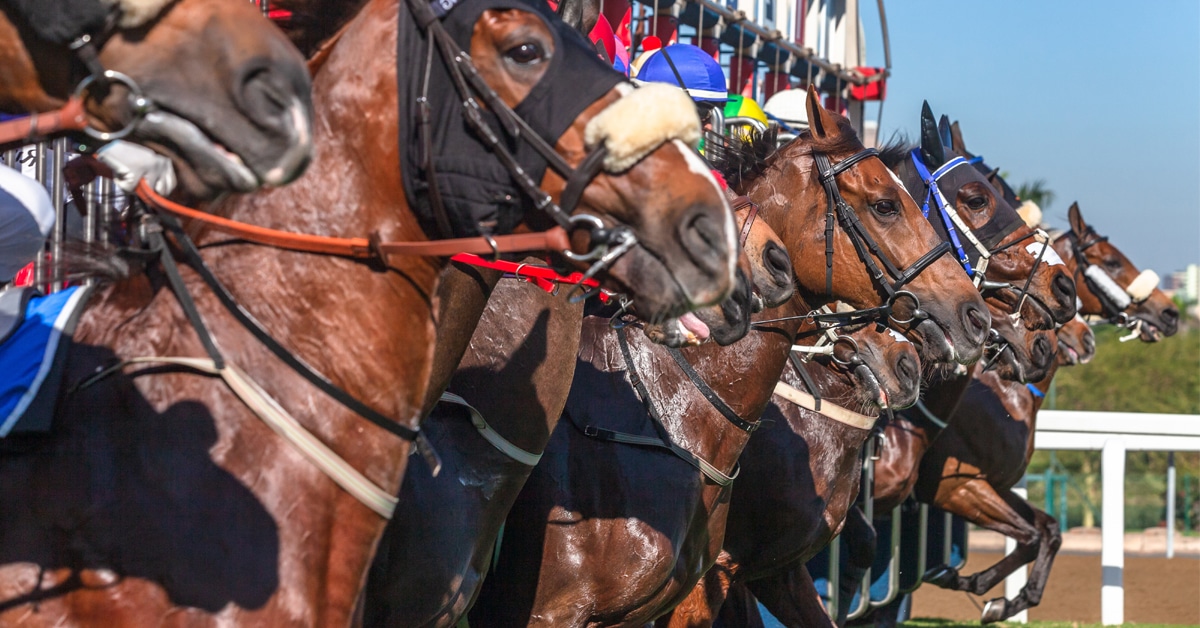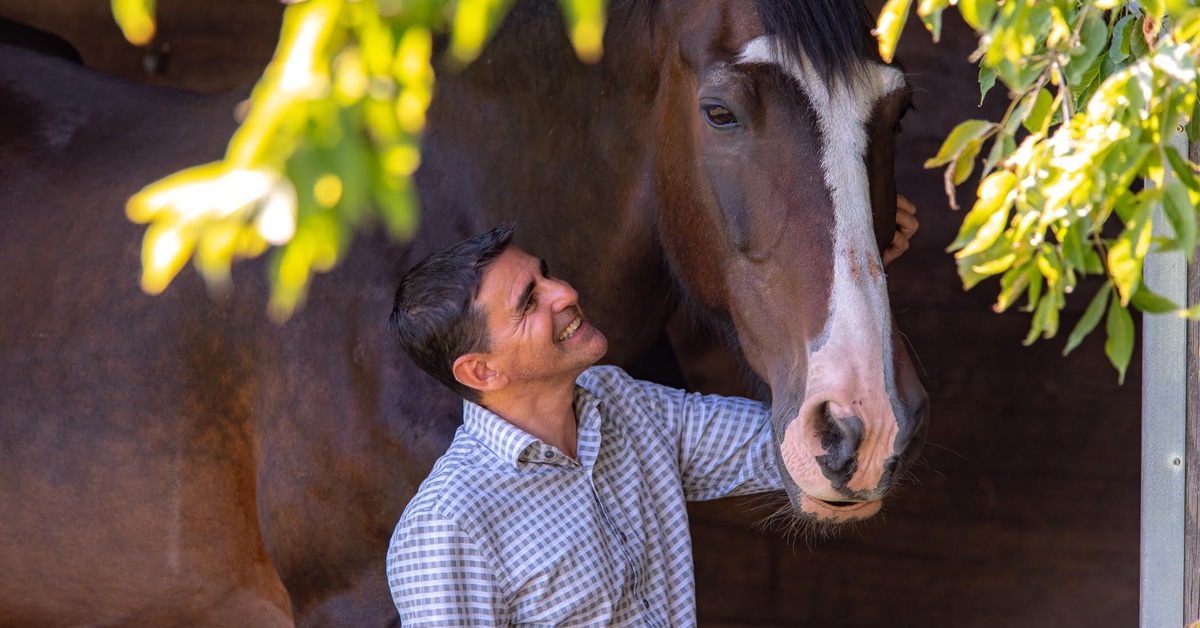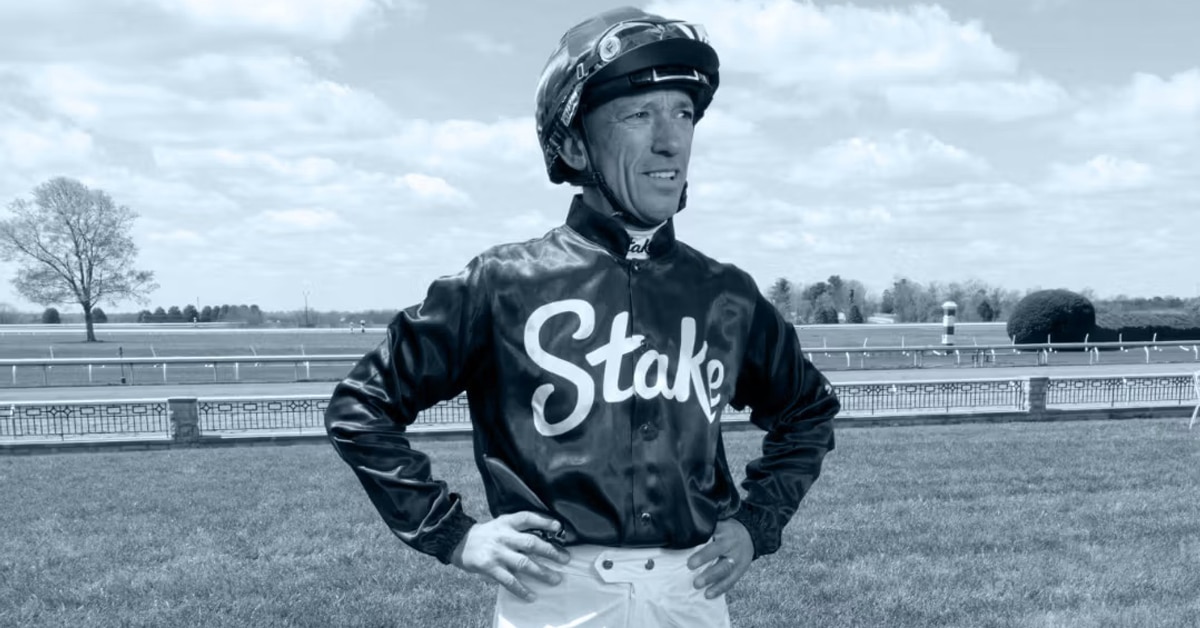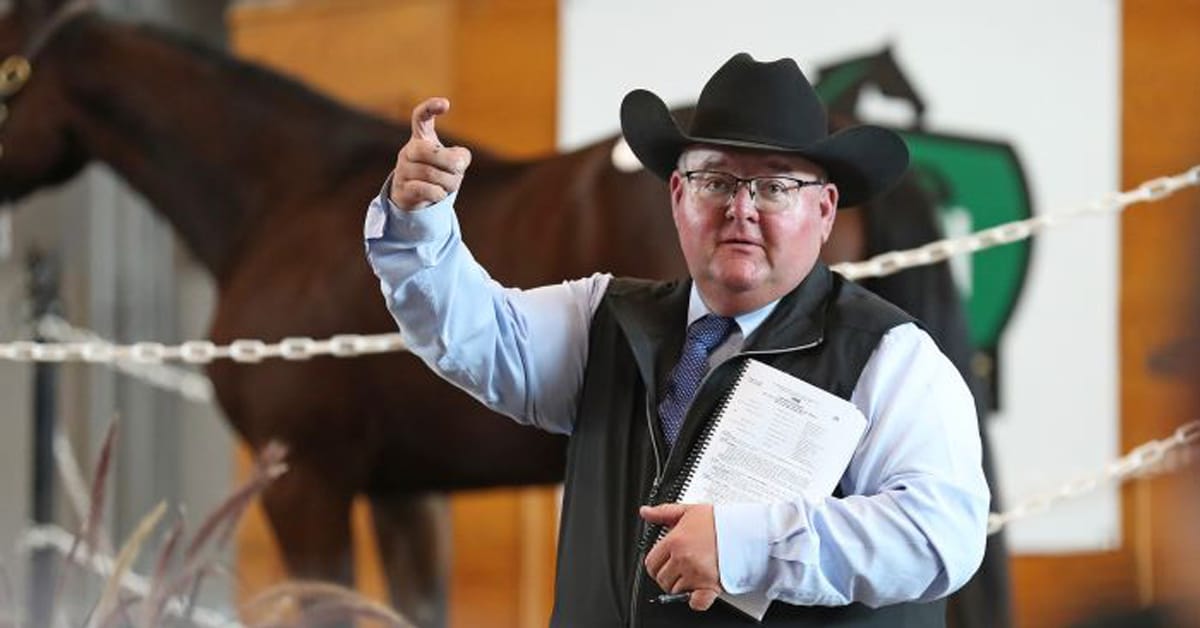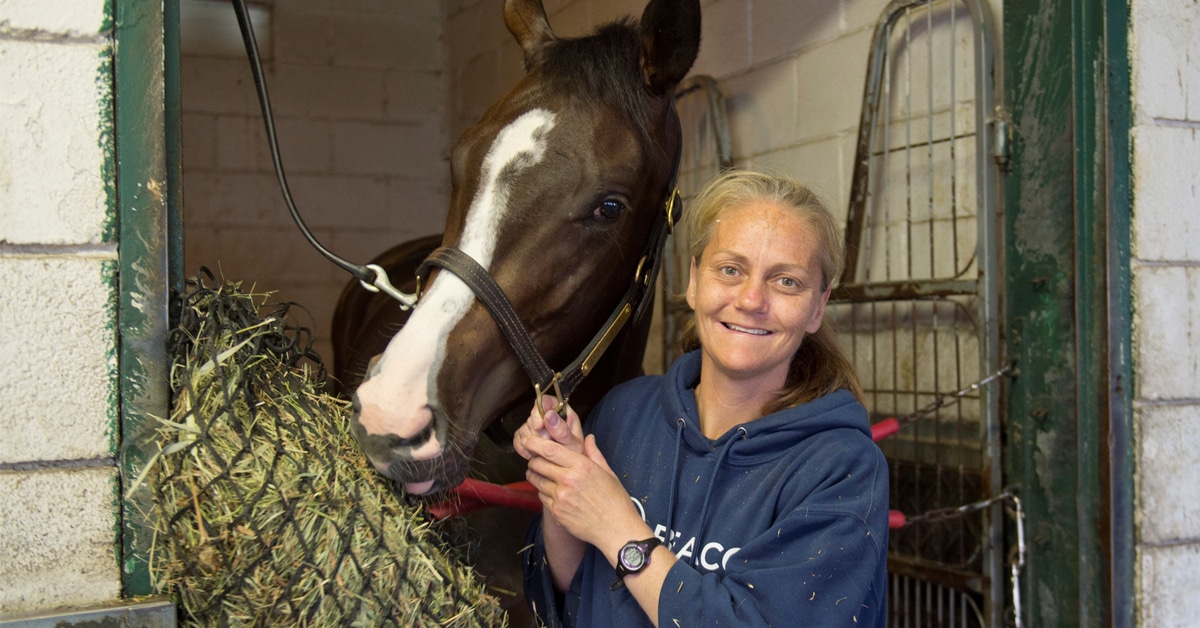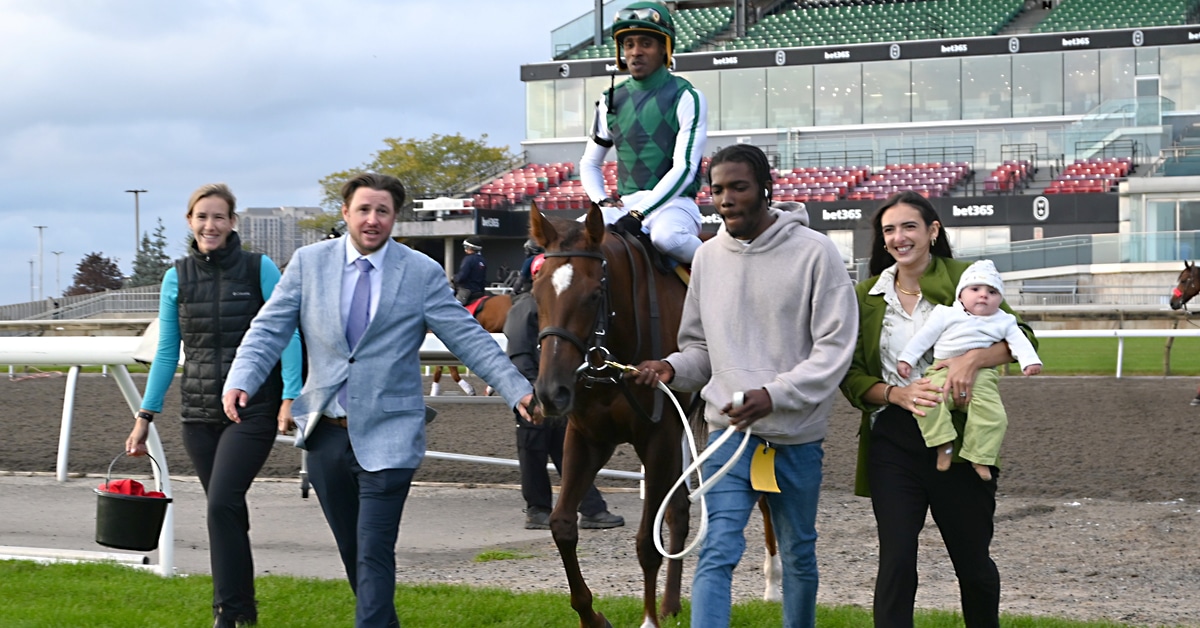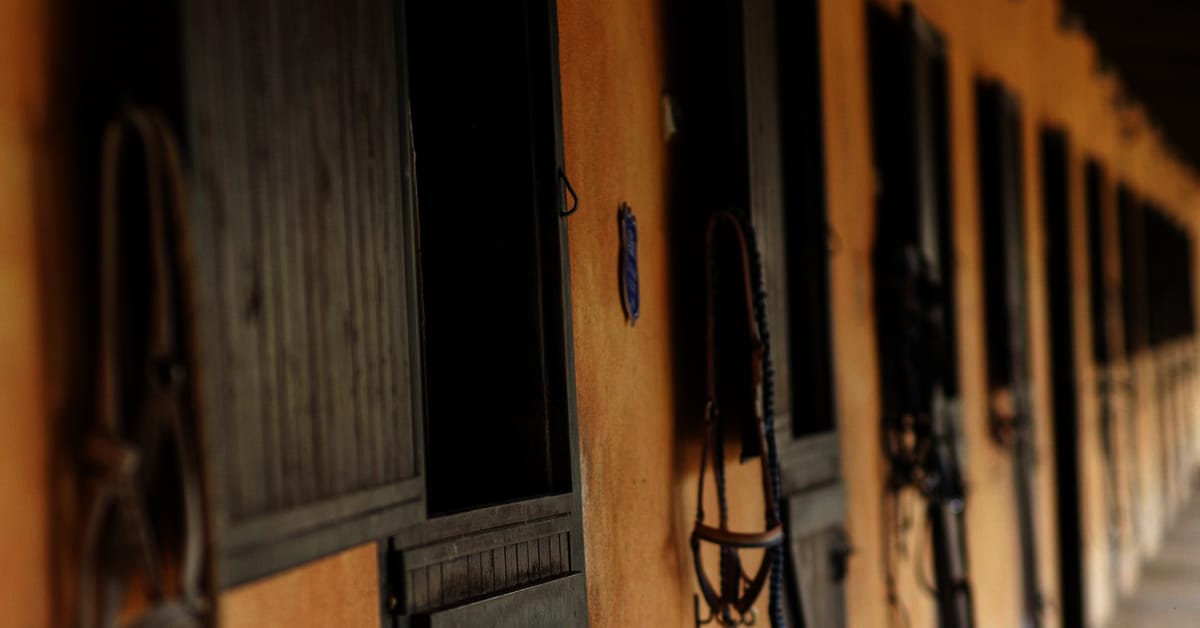Each foaling season, foals are orphaned, rejected, or born to mares that have no milk. This article details a highly successful program for raising these foals, which has been implemented at several universities, veterinary hospitals and horse farms. This feeding program is designed for those who are managing healthy foals that are orphaned, rejected, or born from mares without milk or were weaned early. Foals raised on this program grow and mature the same as non-orphans.
Foals must ingest colostrum or be provided with antibodies for immune protection. Colostrum, or the mare’s first milk, contains high levels of whole protein antibodies to protect the foal from disease. Mares normally secrete colostrum up to 24 hours after foaling. All newborn foals need colostrum, ideally, within the first hour after birth. A 100 lb foal should receive 250 ml (approximately 1 cup) of colostrum each hour for the first six hours after they are born. This is a total of 1500 ml, or about 3 pints of colostrum per 100 lb of body weight. Therefore, breeding farms should have a minimum of 3 pints of frozen colostrum in storage. When needed, it should be removed from the freezer and thawed at room temperature or in a warm water bath. Never microwave colostrum because that will destroy the antibodies and render them useless.
Following colostrum consumption, foals are taught to drink milk replacer from a bucket. Foals should start drinking from a shallow plastic bowl or a bottle with a lamb nipple attached, depending on the foal’s aggressiveness. Most foals will learn to drink from a shallow bowl or bucket very quickly. A method to help foals learn to drink involves placing a finger in their mouths to stimulate the suckle reflex. While they are sucking, raise the bowl containing the milk replacer to their muzzle. After they begin to drink, slowly remove the finger from the foal’s mouth. Repeat until they keep drinking by themselves.
Always bring the milk up to the foal; do not force the foal’s head down. The first few days, warm the milk replacer to 101.5° F to encourage consumption. This is the same temperature as milk from the mare. When the foal is drinking independently, hang a bucket at the foals’ shoulder height and provide the milk replacer at room temperature. The bucket should be a contrasting color to the wall to make it easy for the foal to find.
The chosen milk replacer should be an all-milk product. To assure the equine milk replacer powder is ‘all-milk,’ look at the percentage of fiber listed on the feed tag. It must be less than 0.2% crude fiber or less than 0.4% acid detergent fiber. All milk replacers containing 1.0% crude fiber or higher, will contain a protein source that is less expensive, but not as digestible to the newborn foal. Any protein source other than milk can cause loose stools or diarrhea in the young foal, depending on how much is consumed per day. The selected ingredients in a foal’s food are based on the foal’s ability to digest them and help maintain the natural pH level in their digestive system. Make sure to follow the mixing directions, to make a 10% solution, equivalent to mare’s milk. (One pound of milk powder to one gallon of water.)
Mares produce 3.0% – 3.5% of their body weight in milk per day, as a 10% milk solid solution. This means a 1,000 lb (454 kg) mare will produce 30 to 35 lb (14 to 16 kg) or about 4 gal (18 L) of milk per day. Table 1 can be used to determine, based on the size of the dam, the amount of milk the mare would have produced.

The amount of equine milk replacer needed daily based on the mare’s body weight and expected production. Determine the size of the mare and then the amount of milk replacer in solution to feed daily.
Begin by providing half the recommended amount on the first day. Gradually increase the amount over seven to 10 days, but no faster than one-half gallon or 2 L per day, until the recommended amount is being consumed.
Once the foals are drinking the recommended amount, mix one half of the daily amount, and make it available free choice, AM and PM. Allowing the foal to drink small amounts as often as it wants, will result in fewer digestive upsets, improved milk digestibility, optimal weight gain and improved overall foal health. Each time new formula is mixed, discard remaining milk, and clean the bucket before adding fresh milk replacer. When fed at room temperature, acidified milk replacers will have a tart taste which discourages a foal from drinking too much at one time when offered free choice.
For the first 30 days, foals will drink seven to ten times per hour. Feeding milk replacer free choice allows the foal to drink as often as it would if a mare was present. Free choice feeding also greatly reduces the chance of digestive upsets by preventing them from becoming too hungry and over drinking. If they run out of milk for over one hour, they will drink too fast at the next feeding. This should be avoided as it may cause colic and/or diarrhea.
After the foal drinks the liquid milk replacer before the next feeding, add a handful of milkbased pellets into the same bucket. The pellet may be milk or milk based with the starch in the milk-based pellet rolled oats rather than other cereal grains. Using the same bucket makes the foals more comfortable consuming this new feed. At the next liquid feeding, discard any remaining pellets. Repeat this process until the foal eats the pellets, at this time pellets are provided in a separate bucket and can also be offered free choice.
Please note: a weanling feed formulated with cereal grains, fat and fiber, with the added minerals is not recommended yet. During the first two months of age, the foal will have very small amounts of the enzymes needed to breakdown nonstructural carbohydrates in weanling feed. Feeding these feeds too early can lead to diarrhea, malabsorption and colic. The digestive system changes according to their age, not their size. So age, rather than height and bodyweight, will determine when additional feed should be introduced.
When the foal is eight weeks old, begin reducing the liquid milk replacer by one gallon (4.5 L) the first day and replace it by adding one additional pound of milk-based pellets. Once the foal consumes the added pellets, reduce an additional gallon/day of liquid, and provide another pound of the pellets per day. Continue until the pellets replace all the liquid solution. This transition should take about one week. This gradual change will reduce the chance of digestive upset.
To anticipate the amount of milk replacer (powder) and pellets needed, it is useful to calculate the expected consumption over the first four months of life. Foals weighing 100 lb at birth, should consume four gallons per day and therefore will need (200 lb) of foal milk replacer until weaned from liquid milk at two months of age. They will also need 600 lb of the milk-based pellets to be fed free choice from the first week to four months of age. If the foals are larger or smaller, the amount of foal food will change accordingly.
If the foal is over three weeks old when orphaned, provide just the milk-based pellets free choice. At this age their molars are in and they can chew and swallow the pellets. Provide the pellets free choice up to four months of age. Between three to four months of age, begin mixing the milk-based pellets with a weanling feed by subtracting one pound of the milk-based pellets and adding one pound of the ‘weanling’ feed, every other day. The weanling feed should be fortified with the level of nutrients needed to support the young weanling’s skeletal development and complement the protein (amino acids) and minerals in the type of forage (hay/pasture) your foal is now eating. It should also state on the feed tag, “formulated to be fed to weanlings”. Check the feeding directions on the tag or bag, to find out how much is recommended to be fed per day to meet the foal’s nutrient needs according to their age and size, i.e., bodyweight, for optimal skeletal and soft tissue development.
The milk-based pellet is formulated for the young foal and is fed free choice until they are four months old, or their BCS exceeds 5.5 (on a 1 to 9 scale). After four months of age, it is not necessary to feed milk, because the foal can begin digesting some non-structured carbohydrates from a weanling feed in their foregut, and soft, immature hay, i.e., structured carbohydrates in their hindgut. This orphaned or rejected foal and early weaned feeding and management program, promotes optimal growth, health, and nutrient absorption, while reducing the chance of digestive upsets and skeletal anomalies. Following it will allow the owner/manager to provide appropriate nutrition for the foal’s normal developmental and compensate for the changes that normally occur in the foal’s digestive system.
~ Don Kapper, (ret) Director of Equine Nutrition and Technical Services of Progressive Nutrition, Harlan, Iowa; Director of Equine Nutrition and Senior Vice-President of Buckeye Nutrition
The Latest
